Alternate Baby Yoda Designs Revealed in ‘Disney Gallery: The Mandalorian’
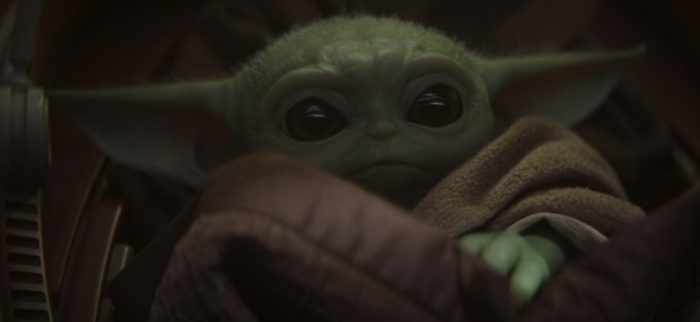
Disney Gallery: The Mandalorian continues a deep dive into the making of the first live-action Star Wars series that’s available on Disney+. After last weekend’s episode proudly displayed the innovative new virtual set technology known as The Volume, the fifth installment of the documentary series shines a light on the practical effects. That includes the creation of the adorable puppet known as “Baby Yoda,” or as he’s officially been designated, The Child. Not only does this episode reveal some of the alternate Baby Yoda designs, but it shows how he evolved from the script to the screen.
See the alternate Baby Yoda designs below and find out what else we learned from Disney Gallery: The Mandalorian.
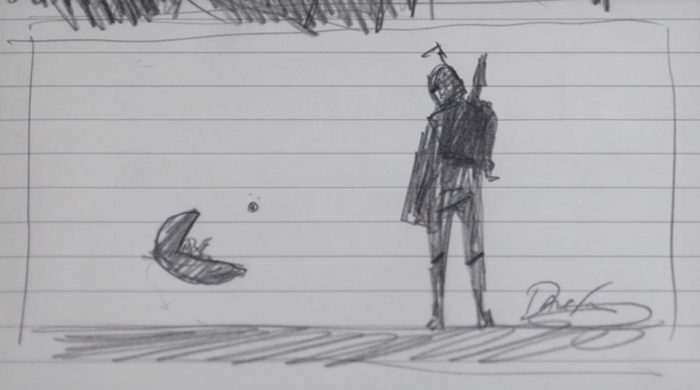
The Evolution of Baby Yoda
Executive producer Dave Filoni is responsible for creating our introduction to Baby Yoda in the first episode of The Mandalorian. Even before any concept art was submitted for the scene in which Mando sees The Child and reaches out to him with his finger, Filoni drew the rough sketch above that eventually became the completed final shot in the series premiere, albeit without The Child using The Force to raise a stone. But getting to that shot took hard work from a lot of people.
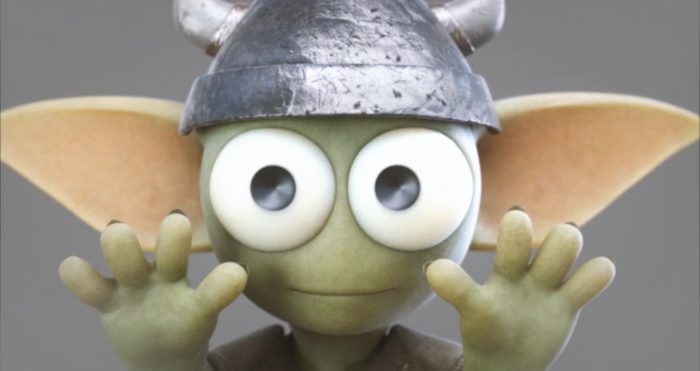
Early on it was decided that Baby Yoda should have giant ears and large, expressive eyes. Jon Favreau was inspired by a virtual reality project called Gnomes & Goblins that he was working on, where the goblins (seen above) also had oversized ears and eyes. The face was intentionally designed to be less expressive with the eyes and ears doing the heavy-lifting.
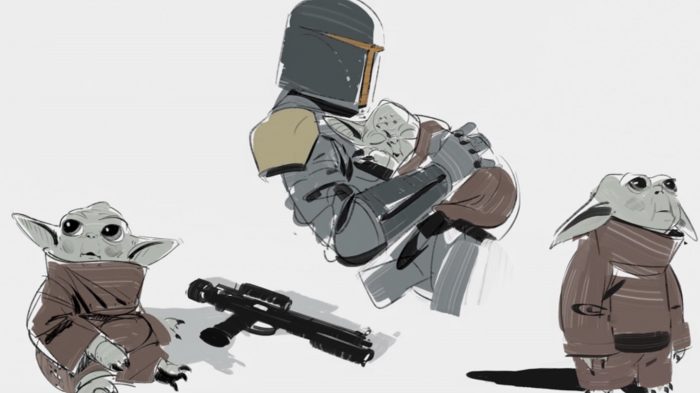
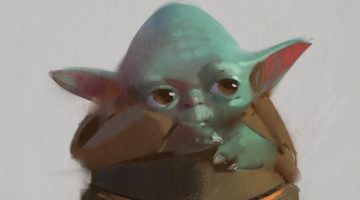
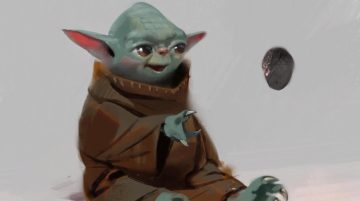
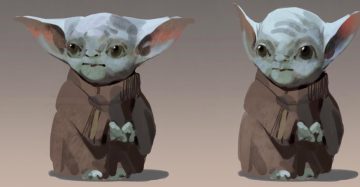
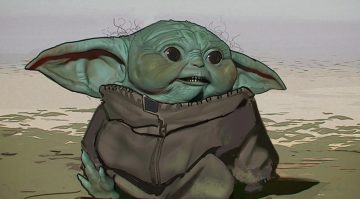
As you can see, there were a variety of designs considered for Baby Yoda. As Favreau explains in the episode, some of them were too ugly, some were the wrong proportions, and some of them were actually too cute, if you can believe that.
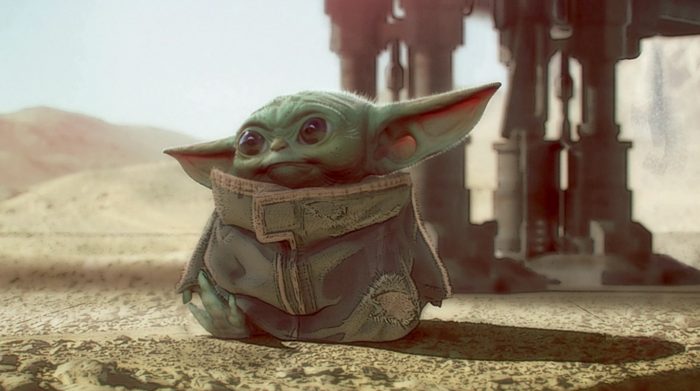
Ultimately, it was the above piece by artist Christian Alzmann that finally captured the essence of what Jon Favreau and Dave Filoni wanted to see in Baby Yoda. The eyes were a little off, but the vibe was charming overall.
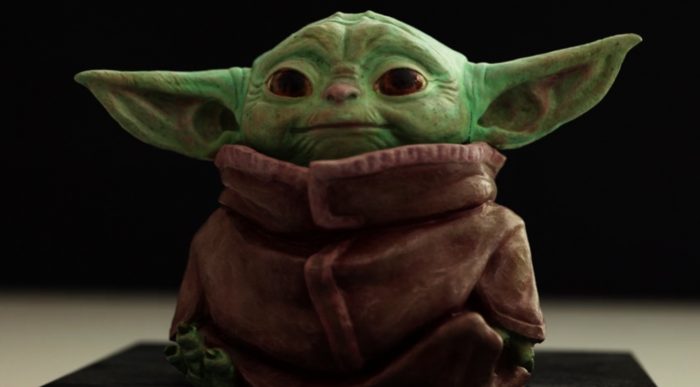
From there, the crew moved onto maquettes, which requires another round of character design tweaks once the character can be seen three-dimensionally. Some of the early maquettes didn’t live up to the ideal look, but once the crew from Legacy Effects came in to work on the character, and after working on it for three months, they nailed it.
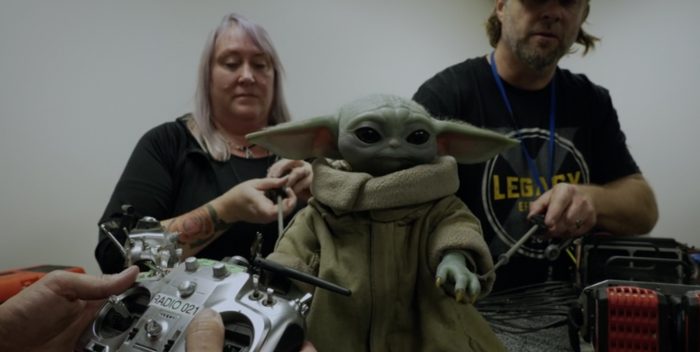
The Many Hands That Control Baby Yoda
There are several different puppeteers who control different parts of Baby Yoda when he’s on camera. Jason Matthews controls the eyes, Trevor Hensley is responsible for body and head movement, Hiroshi “Kan” Ikeuchi takes care of the ears and the mouth, Mike Manzel takes care of body movement like walking and hand reaching, and Tamara Carlson Woodard rotates in with these other puppeteers, as well as being responsible for creating the costume.
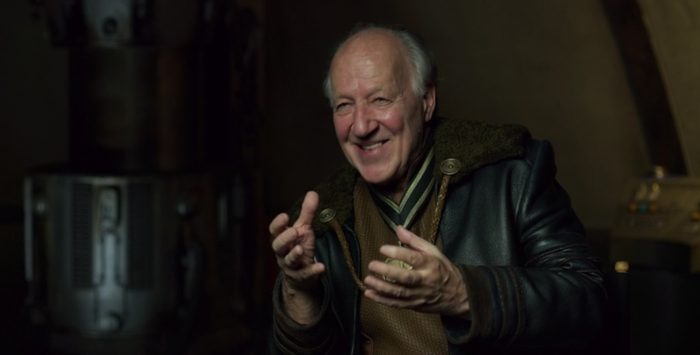
Werner Herzog Loved Baby Yoda, Pushed for Puppetry Over CG
During a rountable discussion with the directors of The Mandalorian‘s first season, Deborah Chow recalls a time when Werner Herzog was on set with The Child, and he started speaking to the puppet and directing it instead of addressing the puppeteers themselves.
Herzog was so taken with the movie magic used to bring The Child that he pushed the filmmakers to use only footage of the puppet in the final cut of the series. During shooting, any shot with Baby Yoda included a plate, which is a shot featuring everything that would normally be on camera except the puppet itself. It’s a back-up done just in case the puppet shots don’t work for whatever reason, allowing them to use visual effects to insert a better version in post-production.
Dave Filoni and Jon Favreau admit that he was right, and even when replacing Baby Yoda with visual effects was required, they didn’t have the character model do anything that the actual puppet couldn’t do.
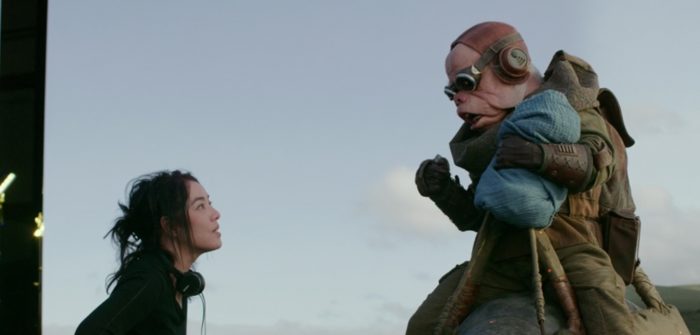
Nick Nolte’s Dialogue Was Recorded Before Shooting
Even though Pedro Pascal records The Mandalorian’s lines in ADR sessions in post-production, the process went exactly the opposite way for Nick Nolte’s character, the ugnaught named Kuiil.
Misty Rosas is the actress doing the physical performance of Kuiil doing shooting. She wears an animatronic face mask created by Legacy Effects, and the controllers have to move the face and mouth to match dialogue that has already been recorded by Nick Nolte. The dialogue is played on set for the puppeteers to sync with and the actors to respond to, and it was quite a tricky process. Rosas actually had to give puppeteer subtle signals for when to begin certain facial reactions as she executed her blocking in a given scene.
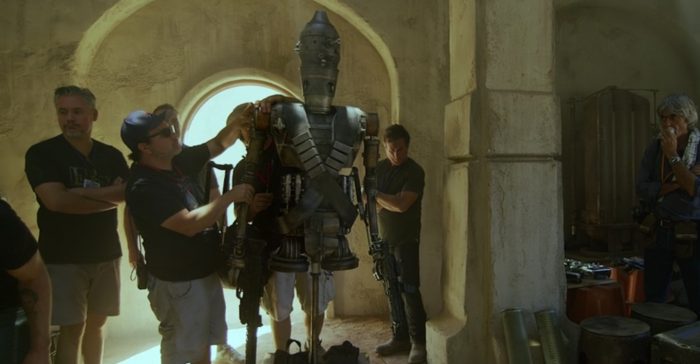
The Stiffness of the IG-11 Stand-In Model Influenced His CG Movement
For lighting reference and actor’s eyelines, there was a life-size, half-model of IG-11 that was used on set. Though it was never intended to be seen on camera, the way the model moved, from the rotating head to the stiff arms, actually informed the robotic movement of the character in post-production. It actually ended up being used in some close-up and medium shots once they saw how good it looked on camera. It was a happy accident, and that awkward movement is a big part of what makes IG-11 work so well as a droid character.
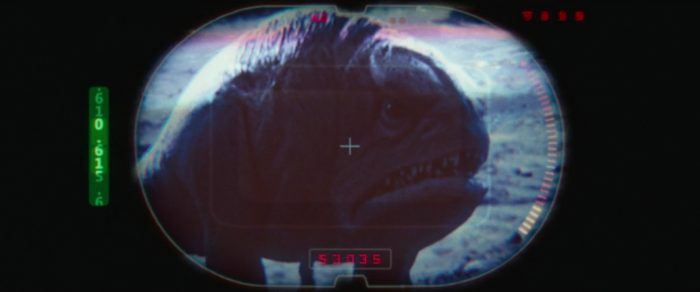
Stoopid Buddy Did Stop-Motion Animation for The Mandalorian
In case you don’t remember, the blurrgs are those squat, two-legged creatures that Mando and Kuiil ride around on in the first season. While they were brought to life with visual effects most of the time, there was some stop-motion animation done by Stoopid Buddy Studios, the animation crew responsible for the Adult Swim comedy series Robot Chicken.
There’s a shot when The Mandalorian using his plasma rifle to scope out the landscape of a planet. The blurrgs that Mando sees through the scope were created with stop-motion animation, and you’d never know it.
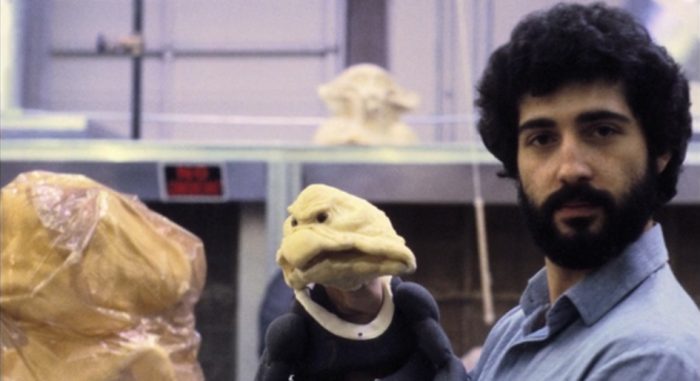
The blurrgs also come with a little bit of Star Wars history because the puppets used for stop-motion animation were created by Tony McVey, who also created the puppet for Jabba the Hutt’s cackling lackey Salacious Crumb in Return of the Jedi. In case you hadn’t already assumed, McVey also built the two other Kowakian monkey-lizards seen in The Mandalorian, one being cooked and the other looking on with great concern.
The post Alternate Baby Yoda Designs Revealed in ‘Disney Gallery: The Mandalorian’ appeared first on /Film.
from /Film https://ift.tt/3cdKA4u
No comments: